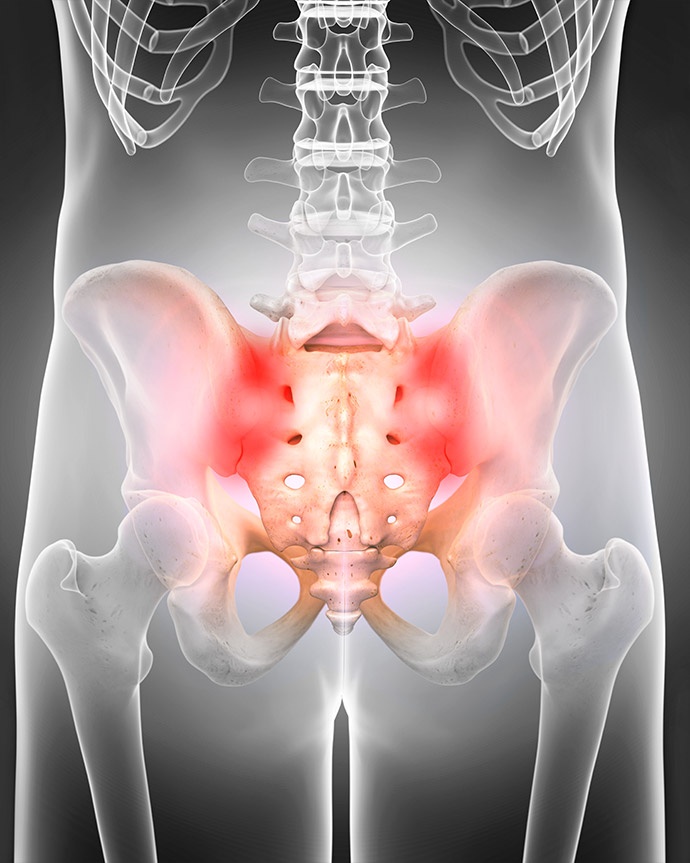Sacroiliac Joint Injection
The sacroiliac joint (SIJ) is a joint between the base of the spine and the pelvis. There are two sacroiliac joints, one on the right and one on the left. Generalised wear and tear/inflammation within the joint can present with lower back pain, groin pain and leg pain (sciatica).
A sacroiliac joint injection can be used as both a diagnostic test and a treatment for sacroiliac joint related pain. Pain relief is usually short-lived, and although some people can get significant and lasting pain relief from these injections, it may not be a cure.

What happens before the procedure:
Before being referred for a sacroiliac joint injection, you need to be assessed by a specialist surgeon or physiotherapist who will take a history of your symptoms and perform a thorough examination. Imaging investigations such as an X-ray, CT or MRI scan might be requested to assess for other causes of symptoms such as arthritis of the hip joint for example.
How do I prepare for my procedure:
Please inform us if you take a blood thinning medication when you arrange your appointment as some need to be temporarily withheld beforehand. Common blood thinning medications include antiplatelets (aspirin or clopidogrel) and anticoagulants (warfarin, apixaban, dabigatran, or rivaroxaban).
Do not stop any medication before talking to us.
Diabetics should closely monitor their blood sugar level before and after the procedure as the steroid medication in the injection can affect this for several days.
You will need to arrange for someone to bring to you to the hospital and to drive you home after the procedure. Ideally you should have someone stay with you for 24 hours after your appointment.
You should not drive for 24 hours following the procedure.
What does the procedure involve?
Sacroiliac joint injections are performed in the hospital as an outpatient under local anaesthetic.
You will go home the same day and not require sedation or general anaesthetic.
An experienced specialist Doctor (Radiologist) will carry out the procedure in a room with a special X-ray camera, called fluoroscopy. The injections only take a short time but the whole procedure may take up to 30 minutes.
You will be asked to lie on your front for the procedure; we will aim to make you as comfortable as possible. The doctor will then clean the skin on your lower back with antiseptic and cover with sterile drapes.
The skin of the affected area of the back will be injected with local anesthetic to numb any pain. The doctor will then guide the needle to the correct position with the help of live X-ray images. Once in position, the doctor will inject the mix of local anesthetic and steroid into the joint at one or two places, and then be removed.
You will usually be able to go home half an hour after the procedure is finished.
What are the side effects of the procedure?
The most common side effect of the injections are slight tenderness and/or bruising at the site of the injection, this usually resolves over the first few days.
In some cases people may feel increased pain for a few days after the injection but this should settle.
More serious side effects are rare but can include bleeding, infection, nerve injury and allergic reactions to the medications used in the procedure.
It is important to seek medical help if you are feeling unwell.
How will I feel after the injection?
You may experience an immediate improvement in symptoms from the injection of local anaesthetic. This effect usually lasts for 12-24 hours.
The steroid medication usually takes two to three days to have an effect and typically peaks at one-two weeks.
Regular pain relief medication can be continued as required.
The success of the injections in reducing a person’s pain and for what length of time varies with the individual.

